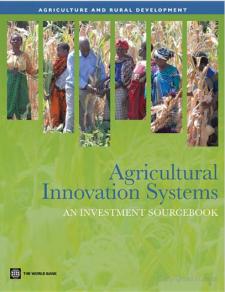You are here: Home » KIT Information & Library Services » ILS Information products » RURAL BUSINESS DEVELOPMENT SERVICES
KIT Dossier Rural Business Development Services
About the glossary
We know that there is a lot of jargon and acronyms involved in market-oriented or rural business development services. Nevertheless we have limited the glossary list to only 7 terms, because we believe below concept map, this dossier, and the free, online publications in the reference section will help you find all the other information you need. The 7 terms can be accessed from the concept map, thus providing additional context for the terms and additional information for the concepts in the map. If you have difficulty locating them, refer to the "Explanatory note to the concept map on rural business development services (RBDS)".

The dynamic version of above concept map can be accessed at: http://cmapspublic2.ihmc.us/rid=1K8C2BZSM-1GK1WWT-Z8/RBDS.cmap.
What are concept maps?
Concept maps are graphical tools for organizing and representing knowledge. They include concepts, enclosed in boxes, and relationships between concepts indicated by a connecting line linking two concepts (Novak and Cañas, 2006). Words on the line, referred to as linking phrases, specify the relationship between the two concepts. Two or more concepts connected by linking phrases form a meaningful statement or proposition. Sometimes these are called semantic units, or units of meaning. The underlying theory of concept maps is formed by Ausubel’s theory of meaningful learning. Read more in the "Explanatory note to the concept map on rural business development services (RBDS)".
Glossary terms
-
Pluralistic services
Pluralistic extension (or pluralistic agricultural advisory services) can be defined as the entire set of organizations that support and facilitate people engaged in agricultural production to solve problems and to obtain information, skills, and technologies to improve their livelihoods and well-being. It includes public–private partnerships and outsourcing to the private sector and nongovernmental organizations (NGOs). From: Birner, R., Davis, K., Pender, J., Nkonya, E., Ponniah, A., Ekboir, J. M., Mbabu, A. N., et al. (2006). From “best practice” to “best fit”: a framework for designing and analysing pluralistic agricultural advisory services. http://search.kit.nl/vivisimo/cgi-bin/query-meta.exe?v%3aproject=kit-portal-RIS&query=link-key%3aMINISIS-644845.
Back to the Rural Business Development Services dossier.
-
Rural (agri-)business development services (RBDS)
Interventions aimed at business service provision and designed and developed by donors have commonly been termed Business Development Services (BDS). BDS has largely focused on reducing poverty by raising the incomes of farmers and rural entrepreneurs. The term ‘business services’, refers to the range of non-financial services provided to micro and small enterprises (MSEs) at various stages in their development. They embody a market development approach to the provision of support services. From: FAO. (2007). Business services in support of farm enterprise development: a review of relevant experiences. ftp://ftp.fao.org/docrep/fao/010/a1448e/a1448e.pdf. See also "Pluralistic extension" in this glossary.
Back to the Rural Business Development Services dossier.
-
Accountability
Accountability in is a key element in demand-oriented business development services. Chain actors downstream in the value chain must be sensitive to the needs of those upstream, but at the same time upstream actors such as smallholders or farmer associations cannot afford to play the role of passive consumers, but instead must play an active role in clarifying their demands. They can do so, because services are paid for, directly or indirectly. In the last case we speak of embedded services.
Back to the Rural Business Development Services dossier.
-
Value chains
A value chain refers to the entire system of production, processing and market in of a particular product, from inception to the finished product (Example of a simple coffee value chain). A value chain consists of a series of chain actors (input suppliers, farmers, traders, processors, retailers), linked together by flows of products, finance, information and services (both represented by the dotted lines: <- - - ->). In this way, the small-scale businesses of asset-poor farmers at the beginning of the chain are intimately connected with larger businesses of traders, food processors and supermarket chains at the end. The services delivered along the value chain are mostly embedded services. [source: Value chain finance: beyond microfinance for rural entrepeneurs (2010) KIT/IIRR]
Above: example of a simple coffee value chain
Back to the Rural Business Development Services dossier.
-
Social learning
learning among participants or stakeholders. In systems thinking, learning is the emergence of new knowledge among stakeholders in the course of a conscious, usually facilitated session or series of learning sessions.
Return to the dossier on Rural Business Development Services.
- Embedded services
- Chain actors
Snelkoppelingen
Agenda News Press Working at KIT About KIT Cookies Contact
Nederlands -English





